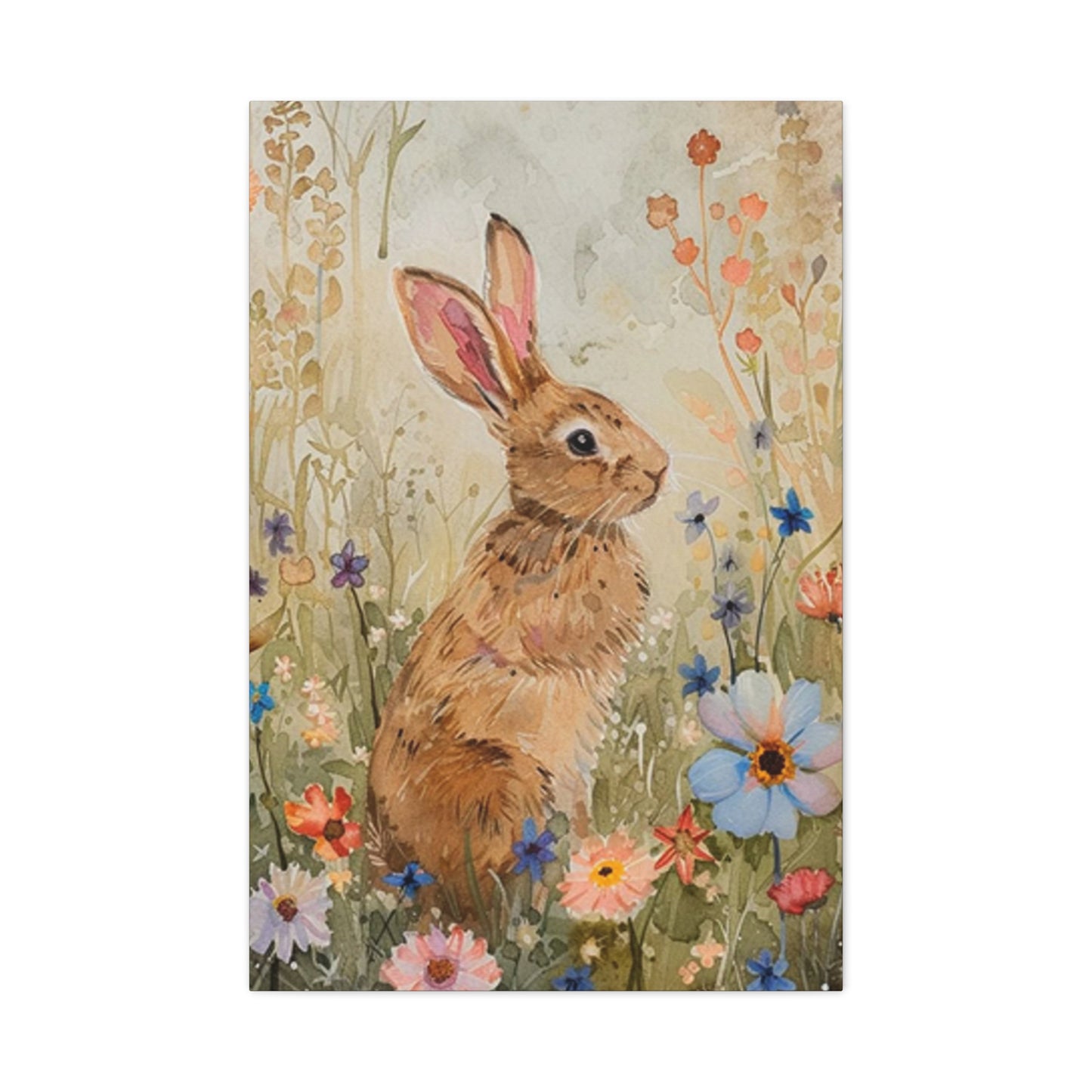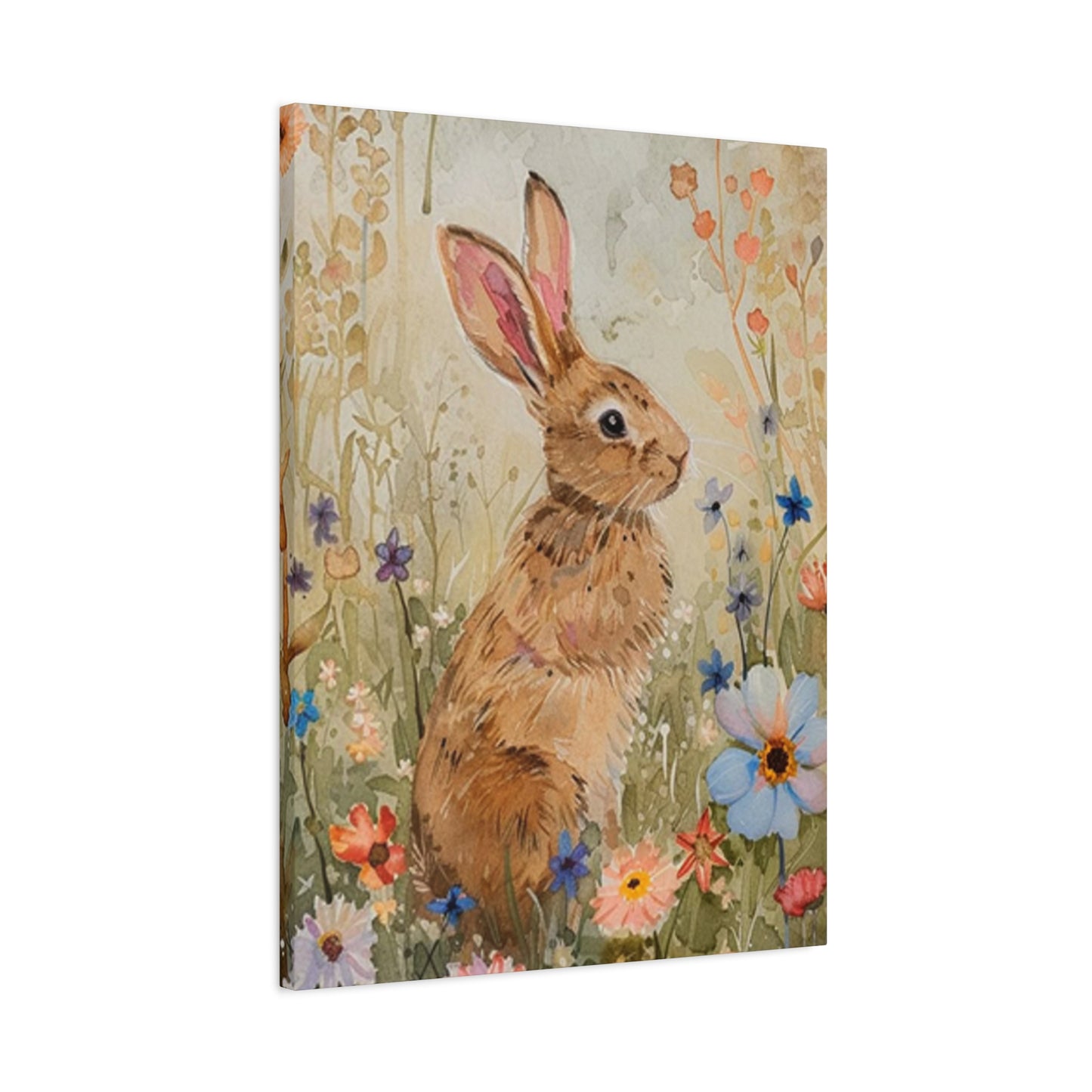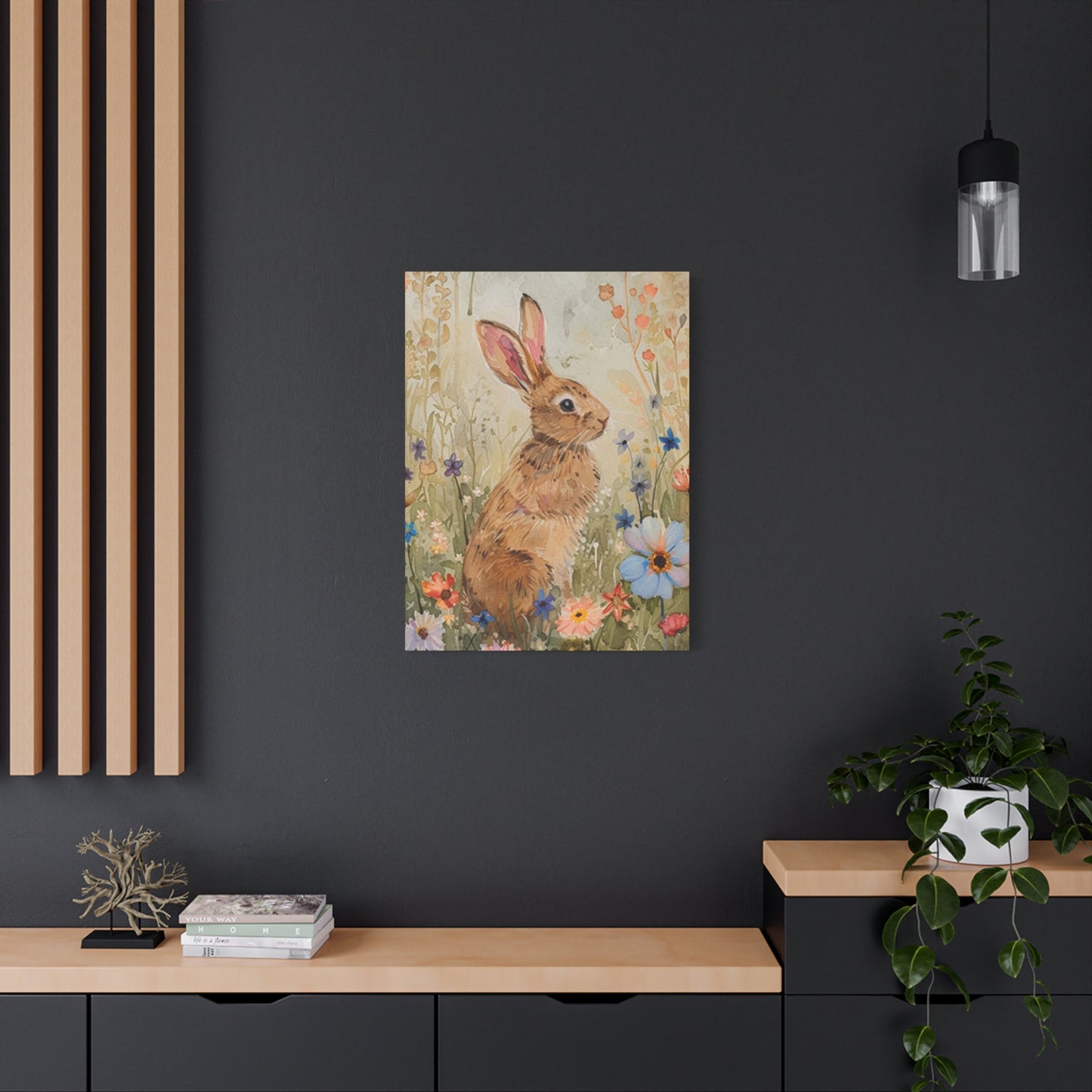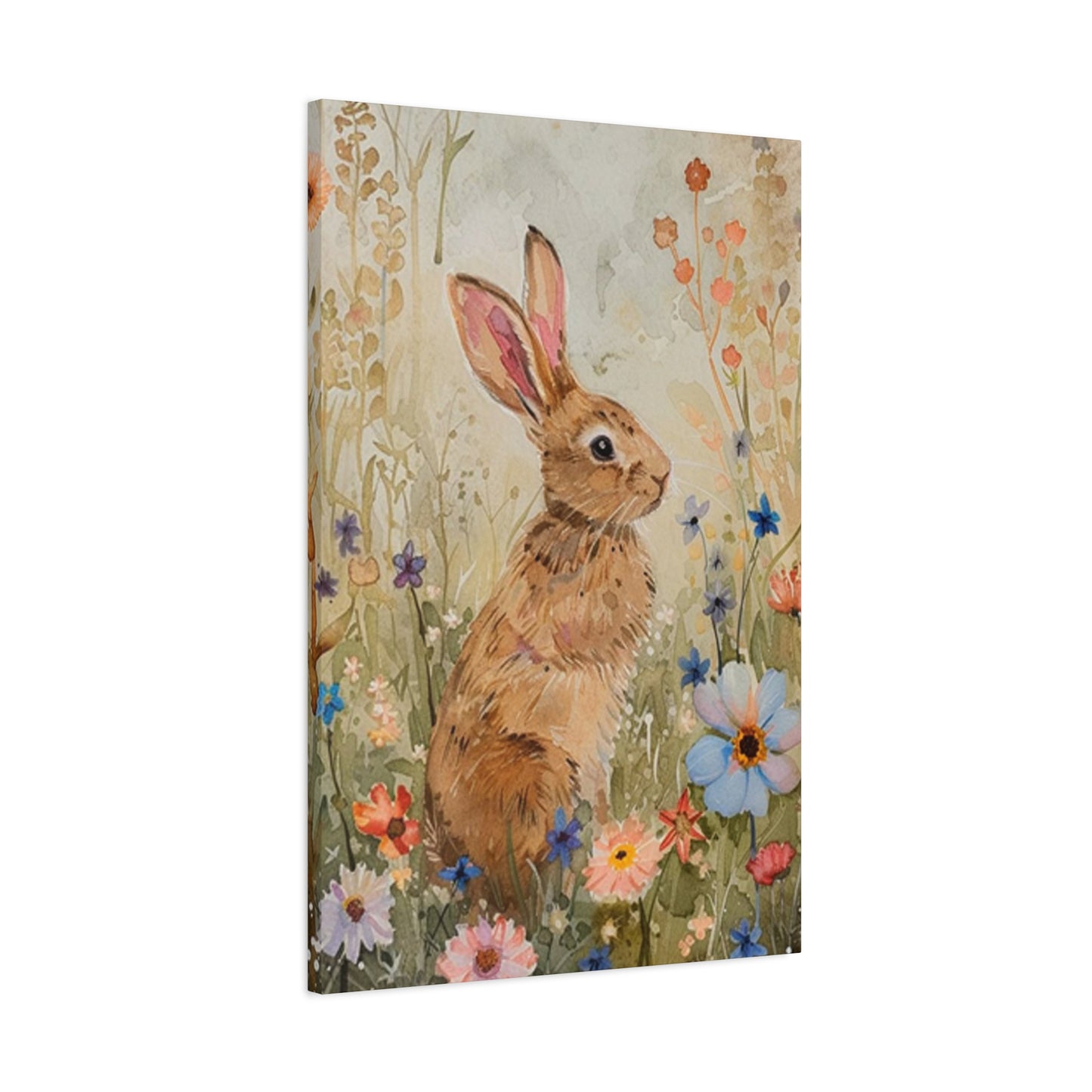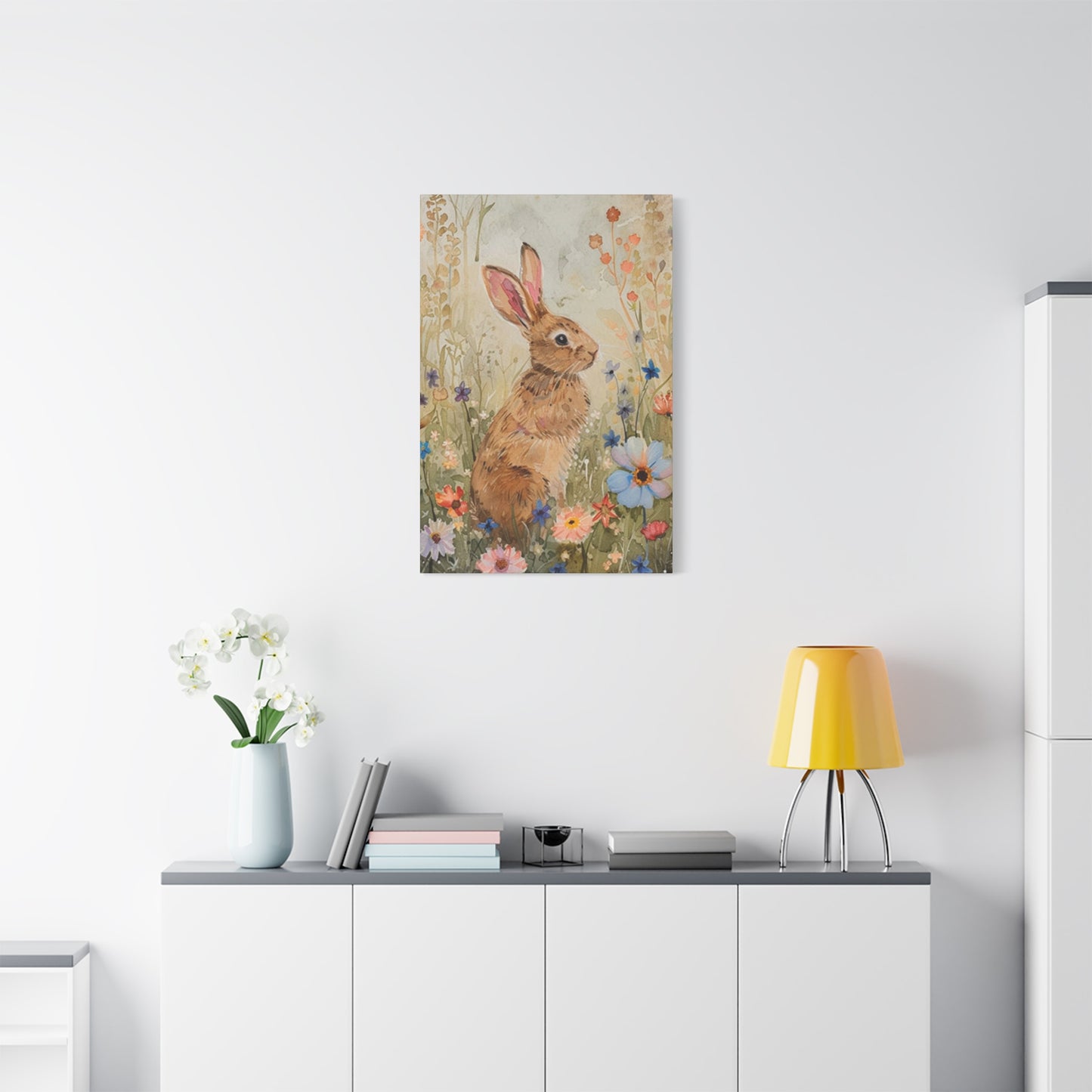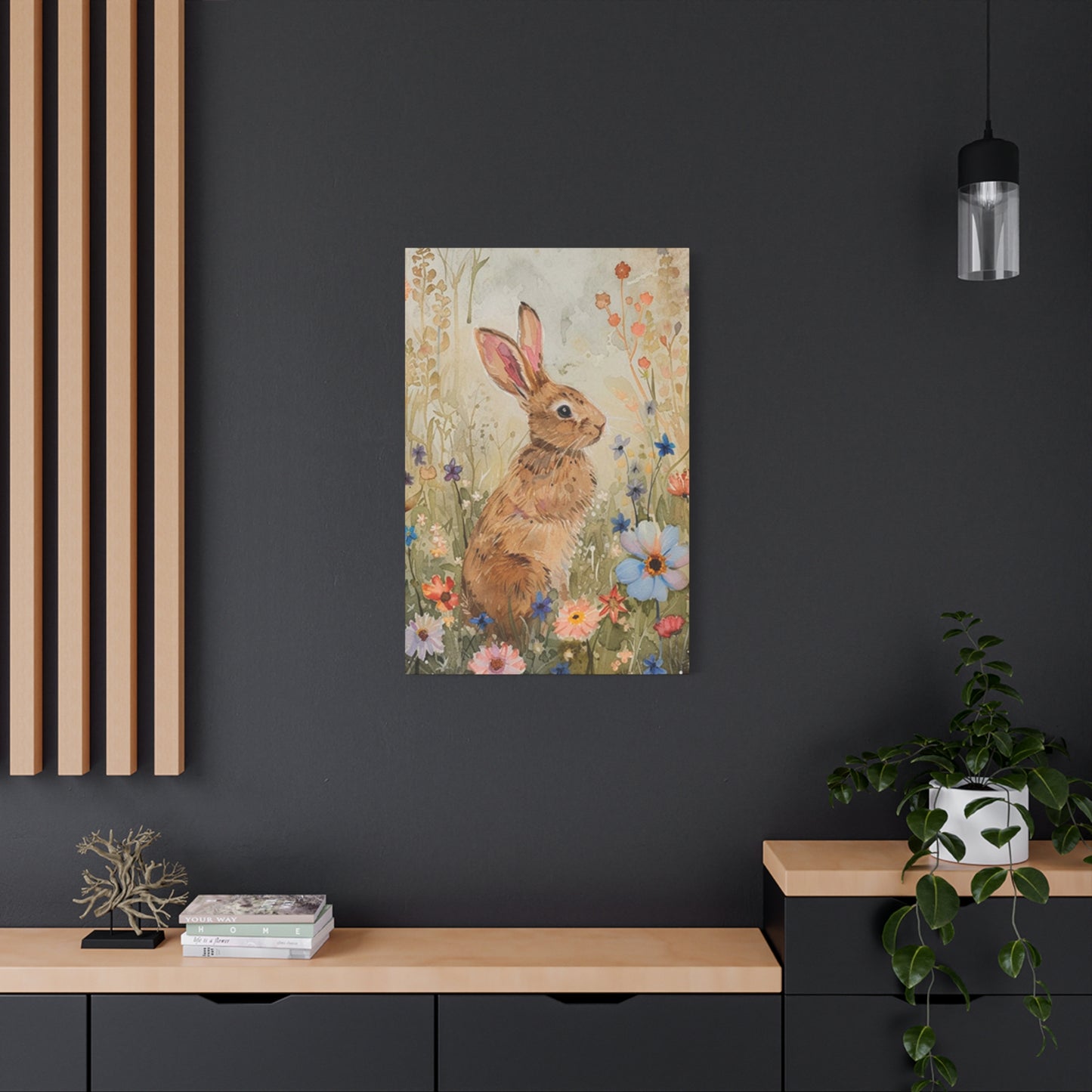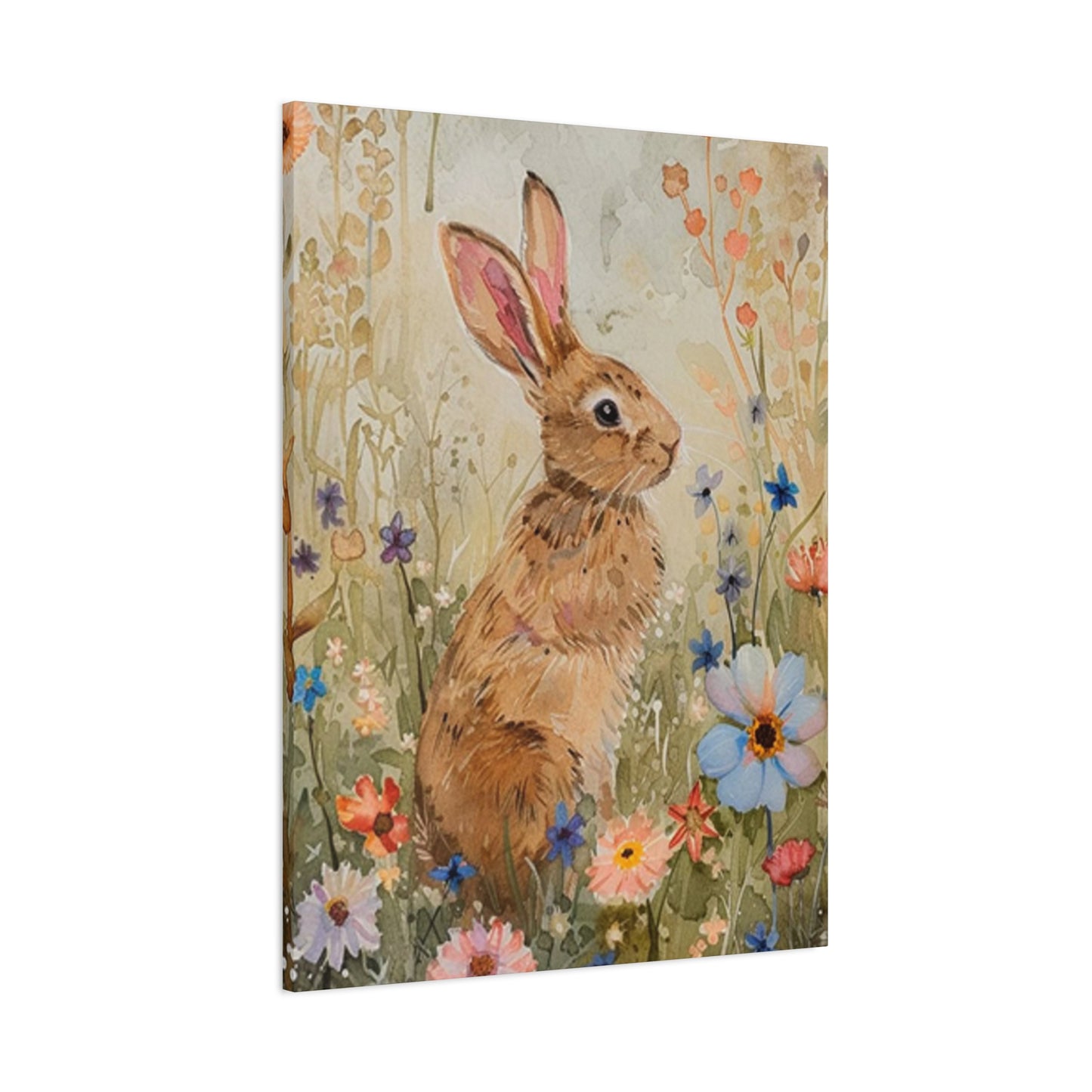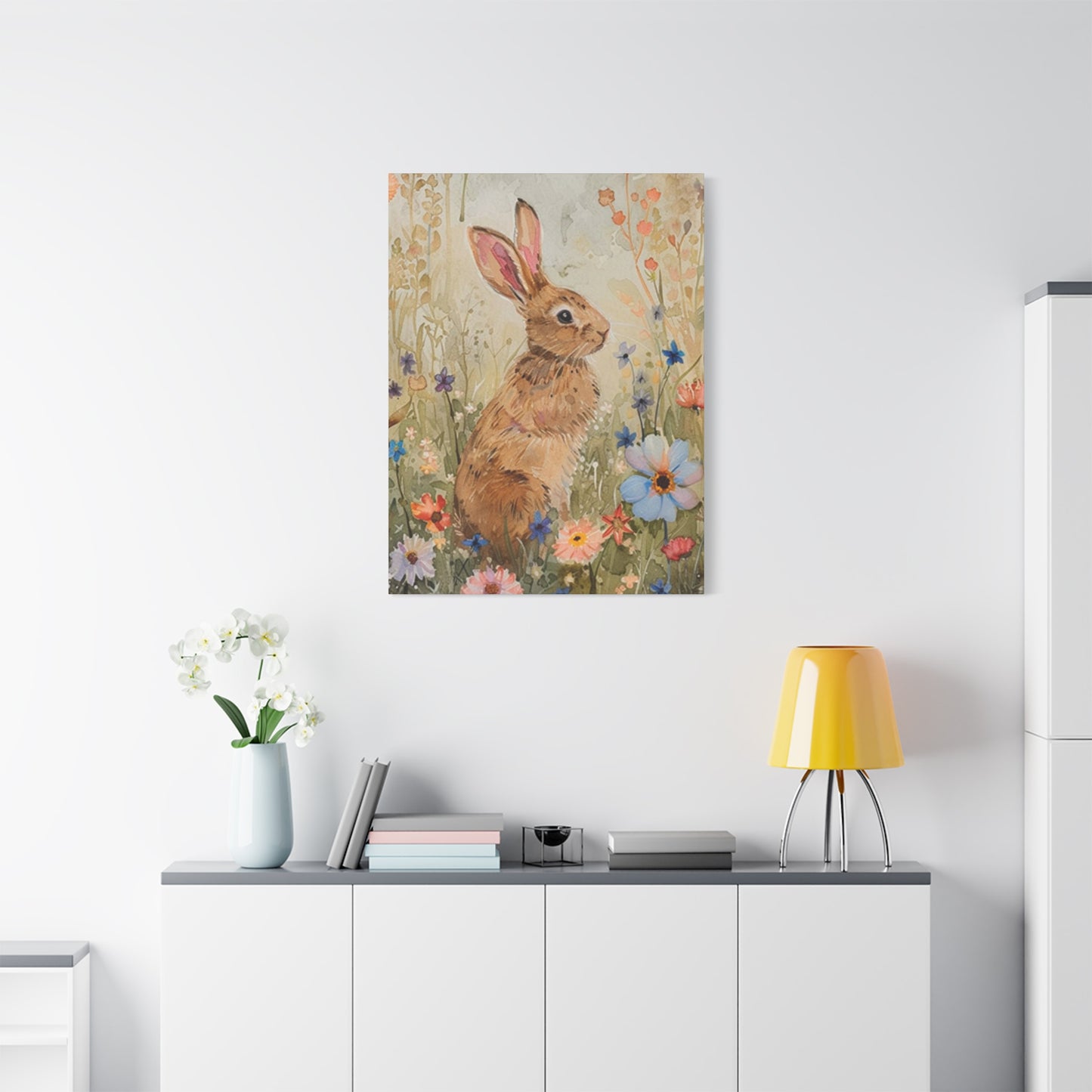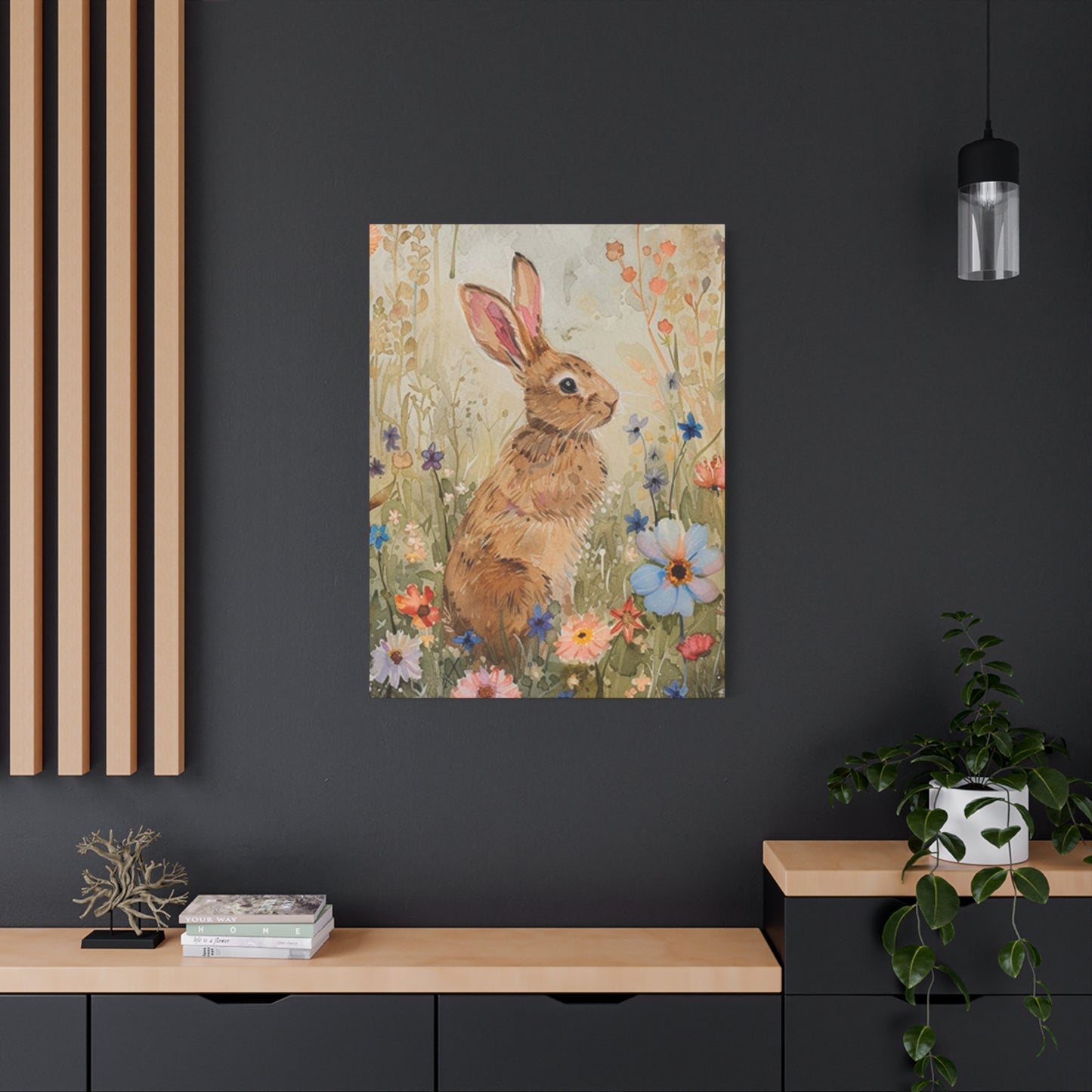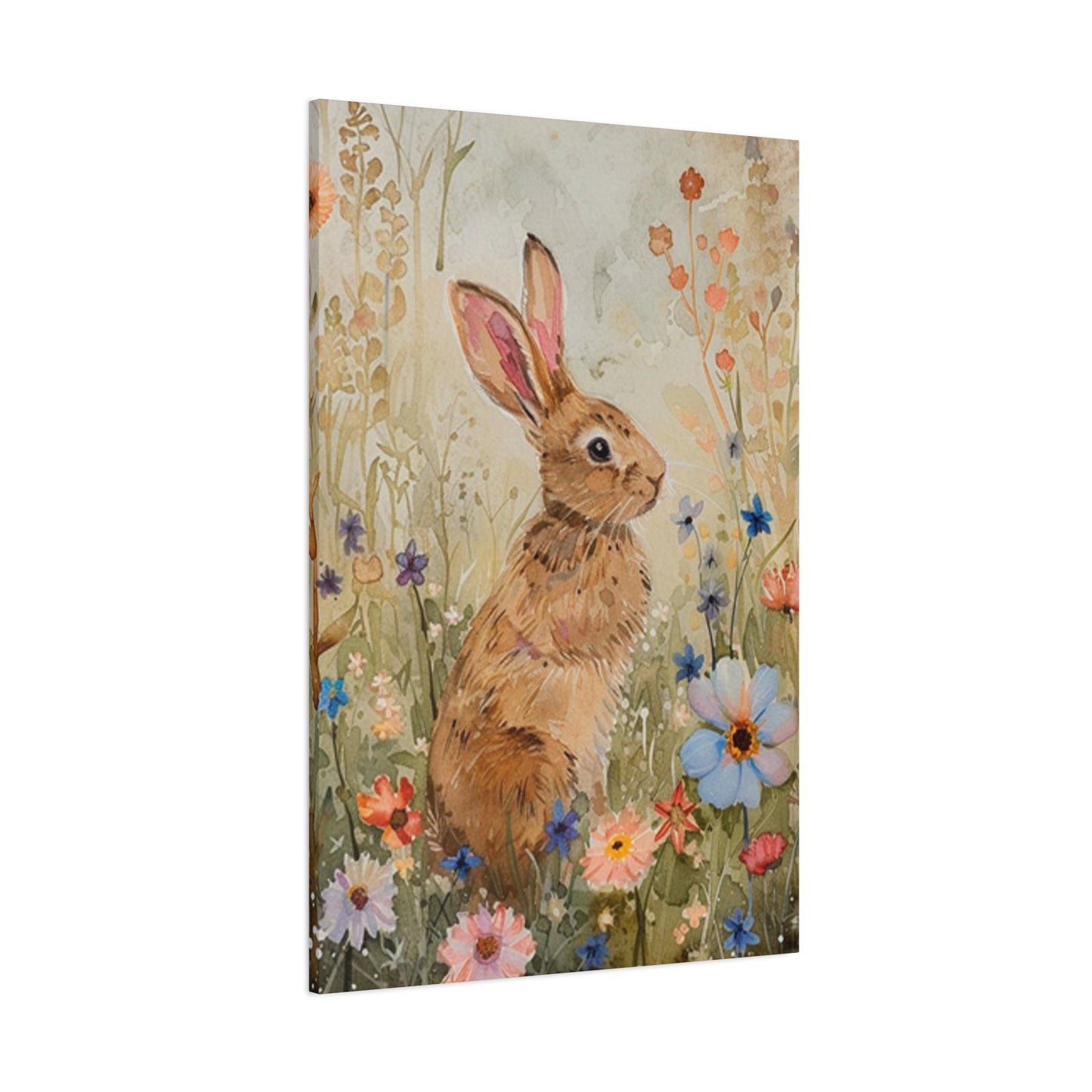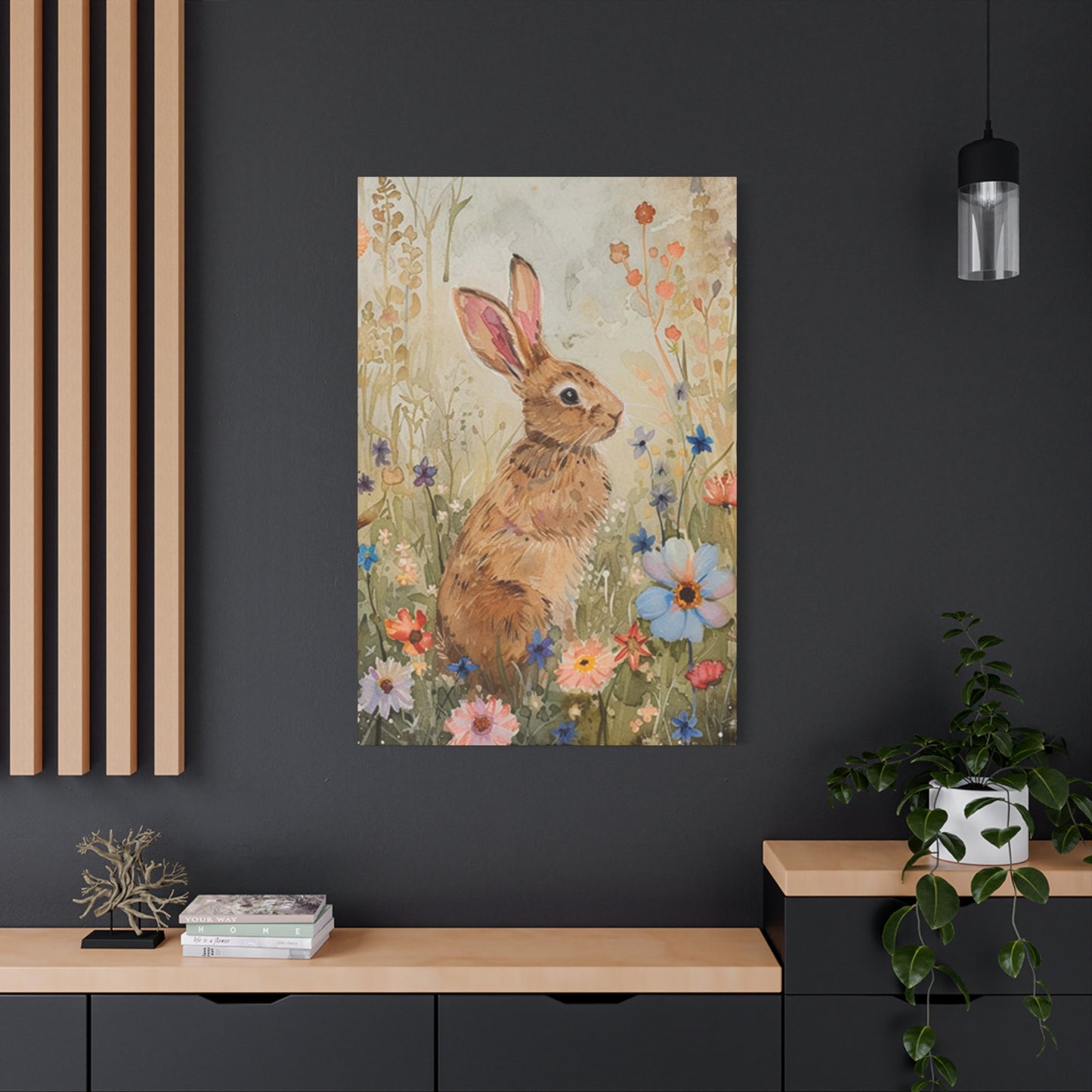Enchanting Rabbit Wall Art: Flora & Fauna Masterpieces for Every Home
Creating beautiful environments in our homes has become more important than ever, and one of the most delightful ways to achieve this is through carefully selected artwork that speaks to our love of nature and gentle creatures. Rabbit wall art, particularly pieces that incorporate flora and fauna elements, offers a perfect blend of whimsy, elegance, and natural beauty that can transform any room into a serene sanctuary.
The appeal of rabbit-themed artwork extends far beyond simple decoration. These pieces represent innocence, fertility, new beginnings, and the gentle rhythms of nature that many homeowners seek to capture in their living environments. When combined with floral and botanical elements, rabbit artwork creates a harmonious narrative that celebrates the interconnectedness of all living things.
Modern homeowners are increasingly drawn to artwork that tells a story, evokes emotion, and creates a sense of connection with the natural world. Rabbit wall art fulfills all these desires while offering versatility that works across various decorating styles, from traditional cottage aesthetics to contemporary minimalist approaches. The soft, rounded forms of rabbits naturally complement floral motifs, creating compositions that are both visually pleasing and emotionally satisfying.
The popularity of nature-inspired artwork has surged as people seek to bring elements of the outdoors into their homes. This trend reflects our innate desire to connect with nature, even when we spend much of our time indoors. Rabbit wall art serves as a gentle reminder of the beauty and tranquility found in natural settings, helping to create environments that promote relaxation and well-being.
Charming Flora & Fauna Rabbit Wall Art
The combination of flora and fauna in rabbit artwork creates some of the most captivating and emotionally resonant pieces available to modern collectors and decorators. These compositions typically feature rabbits nestled among flowers, surrounded by botanical elements, or integrated into garden scenes that celebrate the harmony between animal and plant life.
Artists who specialize in flora and fauna rabbit art often draw inspiration from English countryside traditions, where rabbits and wildflowers exist in perfect harmony. These pieces frequently showcase rabbits among poppies, daisies, roses, or other garden favorites, creating scenes that evoke memories of peaceful walks through meadows or quiet moments in cottage gardens.
The artistic techniques used in flora and fauna rabbit art vary widely, from watercolor washes that create dreamy, impressionistic effects to detailed pen and ink drawings that capture every whisker and petal with precision. Some artists prefer mixed media approaches, combining traditional painting techniques with digital elements or incorporating actual pressed flowers into their compositions.
Color palettes in flora and fauna rabbit art tend to emphasize natural tones that reflect the colors found in actual gardens and meadows. Soft greens, warm browns, delicate pinks, and creamy whites dominate these pieces, creating artwork that integrates seamlessly with most home decorating schemes while maintaining its distinctive character.
The symbolism inherent in flora and fauna rabbit art adds depth and meaning to these decorative pieces. Rabbits traditionally represent new life, fertility, and abundance, while different flowers carry their own symbolic meanings. Roses might represent love and beauty, while daisies symbolize innocence and purity. When combined, these elements create artwork that speaks to fundamental human desires for growth, beauty, and connection with the natural world.
Collectors of flora and fauna rabbit art often find themselves drawn to pieces that capture specific moments in nature, such as a rabbit pausing to smell a flower or a family of rabbits sheltering beneath a blooming tree. These narrative elements transform simple decorative art into storytelling devices that engage viewers and create emotional connections.
Soft Rabbit Paintings for Cozy Homes
Creating a cozy home environment requires careful attention to the emotional impact of decorative elements, and soft rabbit paintings excel at generating feelings of warmth, comfort, and tranquility. These pieces typically feature gentle brushwork, muted color palettes, and composition techniques that emphasize the inherently peaceful nature of rabbits.
The appeal of soft rabbit paintings lies in their ability to create immediate emotional responses in viewers. The rounded, fluffy forms of rabbits naturally evoke feelings of comfort and security, while soft painting techniques enhance these emotional connections. Artists working in this style often employ techniques such as dry brushing, soft blending, and subtle color transitions to create artwork that feels almost touchable.
Watercolor remains one of the most popular mediums for soft rabbit paintings because of its natural ability to create gentle, flowing effects. The transparency of watercolor allows artists to build up layers of color gradually, creating depth and dimension while maintaining the soft, ethereal quality that makes these pieces so appealing in cozy home environments.
Pastel paintings of rabbits offer another approach to achieving the soft aesthetic that works so well in comfortable living environments. The chalky, matte finish of pastels creates artwork that seems to glow with gentle light, making these pieces particularly effective in rooms where relaxation and comfort are primary goals.
Oil paintings can also achieve remarkable softness when artists employ specific techniques such as sfumato, the gradual blending of tones and colors without harsh outlines. This technique, famously used by Leonardo da Vinci, creates paintings where forms seem to emerge from soft shadows, resulting in rabbit artwork that possesses an almost dreamlike quality.
The subject matter in soft rabbit paintings often focuses on peaceful scenarios that reinforce the cozy aesthetic. Common themes include rabbits napping in sunny meadows, mother rabbits with their young, or solitary rabbits in contemplative poses. These subjects naturally complement the soft painting techniques used to create them.
Framing choices for soft rabbit paintings should complement the gentle nature of the artwork. Simple, understated frames in natural wood tones or soft painted finishes work best, avoiding ornate or heavily decorated frames that might compete with the subtle beauty of the paintings themselves.
Floral Bunny Prints to Brighten Any Room
Floral bunny prints represent one of the most versatile and accessible forms of rabbit wall art, offering homeowners an easy way to incorporate nature-inspired themes into their decorating schemes. These prints combine the charm of rabbits with the vibrant beauty of flowers, creating artwork that can instantly brighten and energize any room.
The production of high-quality floral bunny prints has been revolutionized by advances in digital printing technology. Modern printing techniques can reproduce the subtle color variations and fine details of original paintings with remarkable accuracy, making beautiful rabbit artwork accessible to a broader range of collectors and decorators.
Artists creating floral bunny prints often work in digital mediums that allow for easy reproduction while maintaining artistic integrity. These pieces might begin as traditional paintings or drawings that are then digitally enhanced and optimized for printing. The digital process allows artists to adjust colors, add elements, or create variations of successful designs.
The floral elements in bunny prints serve multiple purposes beyond simple decoration. Flowers add color, movement, and seasonal interest to rabbit compositions. Spring flowers like tulips and daffodils create artwork perfect for seasonal decorating, while evergreen elements allow pieces to work year-round.
Print sizes for floral bunny artwork can vary dramatically, from small accent pieces perfect for powder rooms to large statement prints suitable for major wall installations. This size flexibility makes floral bunny prints particularly valuable for decorators working with challenging dimensions or unusual architectural features.
The color possibilities in floral bunny prints are virtually unlimited, allowing decorators to find pieces that perfectly complement their existing color schemes. Monochromatic prints focusing on single color families work well in minimalist environments, while bold, multi-colored pieces can serve as focal points in more eclectic decorating schemes.
Quality considerations for floral bunny prints include paper choice, ink quality, and printing methods. Archival papers and pigment-based inks ensure that prints maintain their color and clarity over time, making them worthwhile investments for serious collectors and decorators.
Nature-Inspired Rabbit Wall Decor
The broader category of nature-inspired rabbit wall decor encompasses artwork that places rabbits within natural environments, celebrating the connection between these gentle creatures and the wider natural world. This approach to rabbit art often includes elements such as forests, meadows, streams, and other landscape features that provide context and narrative depth.
Landscape-oriented rabbit wall decor often draws inspiration from specific geographical regions known for their natural beauty. English countryside scenes, American prairie landscapes, and European forest settings all provide rich backdrops for rabbit artwork. These regional influences help create pieces that resonate with viewers who have connections to particular places or landscapes.
Seasonal variations in nature-inspired rabbit wall decor allow decorators to change their artwork throughout the year, maintaining visual interest while celebrating the changing seasons. Spring pieces might feature baby rabbits among early wildflowers, while autumn compositions could show rabbits preparing for winter among fallen leaves and late-blooming plants.
The scale of nature-inspired rabbit wall decor can range from intimate close-up portraits to sweeping landscape views that place rabbits within larger environmental contexts. Large-scale pieces work particularly well in rooms with high ceilings or extensive wall areas, while smaller, more detailed pieces suit intimate settings where viewers can appreciate fine artistic details.
Mixed media approaches to nature-inspired rabbit wall decor allow artists to incorporate actual natural elements into their work. Pressed flowers, leaves, twigs, and other organic materials can be integrated into compositions, creating three-dimensional artwork that bridges the gap between painting and sculpture.
Environmental consciousness in nature-inspired rabbit wall decor reflects growing awareness of conservation issues and the importance of protecting natural habitats. Many contemporary artists working in this genre incorporate subtle messages about environmental stewardship into their work, creating artwork that is both beautiful and meaningful.
The photographic approach to nature-inspired rabbit wall decor offers yet another perspective on this popular theme. Wildlife photographers who specialize in rabbit photography create stunning images that capture these creatures in their natural habitats, providing artwork that combines artistic vision with documentary accuracy.
Whimsical Rabbit Art with Floral Touches
Whimsical rabbit art embraces a playful, imaginative approach to depicting rabbits and their floral companions, often incorporating fantastical elements, exaggerated proportions, or narrative scenarios that engage viewers' sense of wonder and delight. This style of rabbit art is particularly popular in children's rooms, creative work environments, and homes where owners want to maintain a sense of playfulness and joy.
The whimsical approach to rabbit art often involves anthropomorphizing the subjects, giving rabbits human-like characteristics or placing them in scenarios that blend reality with fantasy. These pieces might show rabbits wearing clothes, playing musical instruments, or engaging in activities that create charming narratives for viewers to enjoy.
Illustration techniques common in whimsical rabbit art include bold outlines, exaggerated proportions, and bright, cheerful color palettes. These approaches create artwork that reads clearly from a distance while maintaining enough detail to reward closer inspection. The floral elements in whimsical pieces often share these characteristics, with oversized blooms, impossible color combinations, or fantastical flower varieties that exist only in the artist's imagination.
Storybook influences play a significant role in whimsical rabbit art, drawing from beloved children's literature traditions that have long featured rabbits as central characters. These influences help create artwork that feels familiar and comforting while maintaining enough originality to avoid copyright issues and ensure uniqueness.
Mixed media techniques work particularly well for whimsical rabbit art, allowing artists to incorporate collage elements, textural materials, and three-dimensional components that enhance the playful nature of their compositions. These approaches can create artwork that invites touch and interaction, making them especially appealing in family environments.
The educational potential of whimsical rabbit art with floral touches makes these pieces valuable additions to children's environments. These artworks can spark conversations about nature, animals, gardens, and the changing seasons while providing visual stimulation that supports cognitive development and creativity.
Cultural influences from around the world inform whimsical rabbit art, with different artistic traditions contributing unique approaches to color, composition, and narrative structure. These international influences help create artwork that feels both universal in its appeal and specific in its cultural references.
Perfect Rabbit Prints for Nurseries
Nursery decorating requires special consideration for safety, developmental appropriateness, and long-term appeal, making rabbit prints an excellent choice for these important environments. Rabbit imagery provides the gentle, nurturing qualities that make nurseries feel safe and welcoming while offering visual interest that supports infant development.
The psychological benefits of rabbit imagery in nurseries are well-documented. The soft, rounded forms of rabbits create visual elements that are naturally soothing to infants and young children. These shapes contrast beneficially with the angular forms of furniture and architectural elements, creating balanced environments that promote relaxation and peaceful sleep.
Color considerations for nursery rabbit prints focus on palettes that support healthy sleep patterns while providing enough visual stimulation to encourage development. Soft pastels, muted earth tones, and gentle contrasts work best in nursery environments. Colors that are too bright or high in contrast can be overstimulating for infants, while colors that are too muted might not provide sufficient visual interest.
Safety requirements for nursery artwork include secure mounting systems, non-toxic materials, and construction that eliminates potential hazards such as small parts or sharp edges. High-quality prints mounted in professional frames with secure hanging systems meet these requirements while providing beautiful decorative elements.
Developmental considerations for nursery rabbit prints include the inclusion of elements that support visual development, such as simple patterns, clear contrasts, and recognizable shapes. As children grow, these same prints can serve educational purposes, providing opportunities to discuss animals, nature, and artistic elements.
Theme coordination in nursery rabbit prints allows parents to create cohesive decorating schemes that work with other nursery elements such as bedding, curtains, and toys. Many artists create series of related prints that work together while maintaining individual appeal, making it easy to create coordinated nursery environments.
Size considerations for nursery rabbit prints must account for the scale of nursery furniture and the viewing distances typical in these rooms. Prints should be large enough to be visible from across the room but not so large as to overwhelm the environment or compete with other important visual elements such as windows or decorative features.
Cottagecore Style Rabbit Paintings
The cottagecore aesthetic movement has brought renewed attention to rabbit paintings that embody ideals of simple living, connection with nature, and traditional craftsmanship. Cottagecore style rabbit paintings typically feature rural settings, traditional artistic techniques, and subjects that celebrate the beauty of countryside life.
Historical influences on cottagecore rabbit paintings include English watercolor traditions, American folk art, and European pastoral painting styles. These historical connections help create artwork that feels authentic and grounded in established artistic traditions while remaining relevant to contemporary decorating preferences.
The cottagecore movement emphasizes sustainability and environmental consciousness, values that align naturally with rabbit artwork themes. Many artists working in this style use eco-friendly materials, traditional pigments, and time-honored techniques that minimize environmental impact while creating beautiful artwork.
Rural imagery dominates cottagecore rabbit paintings, with scenes of rabbits in garden settings, farm environments, and wild meadows. These compositions often include traditional elements such as wooden fences, stone walls, cottage gardens, and other features associated with countryside living.
The handmade aesthetic central to cottagecore philosophy often extends to the framing and presentation of rabbit paintings. Simple, rustic frames made from reclaimed wood or traditional materials complement the artwork while reinforcing the movement's emphasis on sustainability and craftsmanship.
Seasonal celebration in cottagecore rabbit paintings reflects the movement's connection to natural cycles and agricultural traditions. These pieces often commemorate specific seasons, holidays, or agricultural events, creating artwork that changes meaning and relevance throughout the year.
The community aspect of cottagecore culture has created networks of artists and collectors who share techniques, inspiration, and support. This community focus has led to collaborative projects, skill-sharing workshops, and other activities that strengthen the movement and improve the quality of available artwork.
Elegant Flora & Fauna Rabbit Art
Elegance in flora and fauna rabbit art requires sophisticated composition techniques, refined color palettes, and artistic execution that demonstrates mastery of traditional skills while remaining accessible to contemporary viewers. These pieces work particularly well in formal living environments, professional settings, and homes where decorating emphasizes classic beauty and timeless appeal.
Classical composition principles inform elegant flora and fauna rabbit art, with artists employing techniques such as the rule of thirds, golden ratio proportions, and balanced asymmetry to create visually satisfying arrangements. These mathematical relationships create artwork that feels naturally harmonious and pleasing to view.
Refined color palettes in elegant rabbit art often draw from traditional artist color theories, employing harmonious color relationships such as analogous schemes, complementary contrasts, or monochromatic variations. These sophisticated color choices create artwork that integrates seamlessly with formal decorating schemes while maintaining distinctive character.
The portrayal of rabbits in elegant art typically emphasizes their natural grace and dignity rather than their cute or whimsical characteristics. These depictions might show rabbits in alert, attentive poses or capture them in moments of natural behavior that demonstrate their intelligence and awareness.
Floral elements in elegant rabbit art are often chosen for their symbolic significance as well as their visual beauty. Traditional flowers with rich cultural meanings, such as roses, lilies, or peonies, add layers of significance to compositions while contributing their natural beauty to the overall design.
Technical execution in elegant flora and fauna rabbit art demonstrates mastery of traditional artistic skills such as accurate proportions, convincing textures, and sophisticated use of light and shadow. These technical achievements create artwork that rewards close inspection while maintaining its impact when viewed from a distance.
The framing and presentation of elegant rabbit art requires careful attention to traditional standards and conventions. High-quality materials, professional mounting techniques, and frames that complement rather than compete with the artwork ensure that these pieces achieve their full decorative potential.
Rabbit Paintings That Add Calm and Charm
The ability of rabbit paintings to create peaceful, charming environments makes them valuable tools for homeowners seeking to establish calming atmospheres in their living environments. The inherent characteristics of rabbits as gentle, quiet creatures naturally translate into artwork that promotes relaxation and emotional well-being.
Color psychology plays an important role in rabbit paintings designed to add calm and charm. Cool colors such as soft blues, gentle greens, and lavender purples naturally promote relaxation and tranquility. When combined with the neutral tones of rabbit fur and the soft colors of accompanying floral elements, these palettes create artwork that actively contributes to peaceful environments.
Composition techniques that enhance the calming effects of rabbit paintings include horizontal orientations that suggest stability and rest, soft edges that avoid visual tension, and balanced arrangements that create visual harmony. These technical choices work together to create artwork that feels naturally peaceful and undemanding.
The subject matter in calming rabbit paintings often focuses on restful scenarios such as rabbits napping, grooming, or simply sitting quietly in natural settings. These peaceful activities naturally communicate tranquility to viewers, helping to create environments that support relaxation and stress reduction.
Texture considerations in rabbit paintings designed for calm environments typically emphasize soft, gentle surfaces that suggest comfort and warmth. Artists might use techniques such as soft brushwork, gentle blending, or subtle color transitions to create paintings that feel naturally soothing to view.
The placement of calming rabbit paintings within home environments requires consideration of factors such as lighting, viewing angles, and surrounding decorative elements. These pieces work particularly well in bedrooms, reading areas, meditation environments, and other locations where peace and tranquility are primary goals.
Scientific research on the effects of nature imagery on stress levels and well-being supports the use of rabbit paintings in therapeutic environments. Healthcare facilities, counseling offices, and other professional settings increasingly recognize the value of gentle animal imagery in creating supportive, healing environments.
Small Rabbit Prints for Cozy Environments
Small rabbit prints offer unique advantages for decorators working with intimate environments or seeking to create collections of related artwork. These pieces provide opportunities for detailed viewing while maintaining the flexibility to work within challenging architectural constraints or budget limitations.
The intimacy created by small rabbit prints makes them particularly suitable for personal environments such as bedrooms, studies, home offices, and reading nooks. These pieces invite close viewing and create personal connections between viewers and artwork that larger pieces might not achieve.
Gallery wall applications for small rabbit prints allow decorators to create sophisticated arrangements that tell stories or develop themes through multiple related pieces. These collections can evolve over time, with new pieces added as they become available or as decorating preferences change.
Budget considerations make small rabbit prints accessible to a broader range of collectors and decorators. These pieces often cost significantly less than larger artwork while providing equal artistic quality and decorative impact when properly displayed and arranged.
Framing options for small rabbit prints include traditional single frames, multiple openings within single frames, and modern floating mount systems that emphasize the artwork while minimizing frame visibility. These choices allow decorators to customize presentations to match their specific aesthetic preferences.
Grouping strategies for small rabbit prints can create visual impact that rivals larger single pieces. Symmetrical arrangements provide formal, traditional appeal, while asymmetrical groupings create more dynamic, contemporary effects. The key lies in maintaining visual connections between pieces through color, style, or subject matter relationships.
Seasonal rotation possibilities with small rabbit prints allow decorators to change their artwork throughout the year, maintaining visual interest while celebrating seasonal changes. Storage and handling considerations for these smaller pieces make rotation practical and appealing for many homeowners.
Botanical Rabbit Art for Nature Lovers
Botanical rabbit art appeals specifically to individuals who appreciate detailed, scientifically accurate representations of plant life combined with charming animal subjects. This specialized category of rabbit art often incorporates elements of botanical illustration, field guide accuracy, and artistic beauty to create pieces that serve both decorative and educational purposes.
Scientific accuracy in botanical rabbit art requires artists to research and accurately depict both plant and animal subjects. This attention to detail creates artwork that appeals to knowledgeable viewers while providing educational value for those interested in learning about natural subjects.
The botanical illustration tradition provides a rich foundation for contemporary rabbit art, with historical examples demonstrating how scientific accuracy and artistic beauty can be successfully combined. Modern artists working in this tradition often study historical techniques while adapting them for contemporary audiences and decorating preferences.
Field guide influences on botanical rabbit art create pieces that might include identifying information, habitat details, or other educational elements alongside the artistic content. These additions make the artwork particularly valuable in educational environments or for collectors interested in natural history.
Seasonal plant combinations in botanical rabbit art allow artists to create scientifically accurate compositions that also celebrate the changing seasons. These pieces might show rabbits among spring wildflowers, summer garden plants, autumn berries, or winter evergreens, creating artwork that maintains accuracy while providing seasonal interest.
Regional plant varieties in botanical rabbit art can reflect specific geographical locations, creating pieces that resonate with viewers familiar with particular landscapes or plant communities. These regional connections add meaning and personal relevance to the artwork while maintaining educational value.
The conservation message implicit in much botanical rabbit art reflects growing awareness of environmental issues and the importance of protecting natural habitats. Many artists working in this genre see their work as contributing to environmental education and conservation awareness efforts.
How to Style Rabbit Wall Art
Successfully styling rabbit wall art requires understanding how these pieces interact with other decorative elements, architectural features, and lighting conditions within home environments. The gentle nature of rabbit artwork makes it highly versatile, but achieving optimal results requires attention to placement, proportion, and coordination with surrounding elements.
Height placement for rabbit wall art should consider both aesthetic principles and practical viewing requirements. The center of artwork should typically be positioned at eye level for the primary users of each room, though this rule may require adjustment in rooms with high ceilings or when artwork is viewed primarily from seated positions.
Lighting considerations for rabbit wall art include both natural and artificial light sources. Natural light can enhance the colors and details in rabbit artwork, but direct sunlight should be avoided to prevent fading. Artificial lighting should provide even illumination without creating glare or shadows that interfere with viewing.
Color coordination between rabbit wall art and existing room colors requires consideration of both harmony and contrast principles. Artwork can either blend seamlessly with existing color schemes or provide intentional contrast that creates focal points and visual interest.
Furniture relationships with rabbit wall art should create balanced compositions that feel intentional rather than accidental. Artwork should relate to furniture scale and placement while maintaining appropriate spacing that allows each element to be appreciated individually.
Grouping principles for multiple rabbit art pieces include consideration of visual weight, color relationships, and thematic connections. Successful groupings create unified presentations that are greater than the sum of their individual parts while maintaining the individual appeal of each piece.
Style mixing with rabbit wall art allows decorators to successfully combine these pieces with artwork in other styles or subjects. The key lies in finding connecting elements such as color, scale, or frame style that create visual harmony despite stylistic differences.
Gift Ideas: Rabbit & Floral Paintings
Rabbit and floral paintings make exceptional gifts because they combine universal appeal with personal meaning, making them suitable for a wide range of recipients and occasions. The gentle nature of these subjects makes them appropriate for almost any age group or decorating preference while maintaining enough artistic sophistication to appeal to serious collectors.
Occasion-specific gift giving with rabbit and floral paintings can acknowledge special events such as housewarmings, baby showers, birthdays, or holidays. The symbolic meanings associated with rabbits and different flowers allow gift-givers to choose pieces that carry specific messages appropriate to each occasion.
Personalization options for rabbit and floral paintings as gifts might include custom color schemes, specific flower varieties, or even commission work created specifically for individual recipients. These personalized elements transform standard artwork into meaningful keepsakes that recipients will treasure for years.
Recipient considerations for rabbit and floral painting gifts include age appropriateness, existing decorating preferences, and available display options. Children might prefer more whimsical interpretations, while adults might appreciate more sophisticated or realistic approaches to the same subjects.
Packaging and presentation for rabbit and floral painting gifts should reflect the thoughtful nature of the selection process. Professional framing, quality wrapping materials, and accompanying information about the artwork or artist can enhance the gift-giving experience.
Price range considerations for rabbit and floral painting gifts span from affordable prints suitable for casual gift-giving to original paintings appropriate for major celebrations or relationships. This range ensures that appropriate options exist for virtually any budget or occasion.
Educational gift opportunities with rabbit and floral paintings can combine artistic beauty with learning experiences, particularly for young recipients. Accompanying books about rabbits, gardening, or art appreciation can transform simple decorative gifts into comprehensive educational experiences.
Pastel Rabbit Prints for Soft Aesthetics
Pastel rabbit prints excel at creating soft, dreamy aesthetics that promote feelings of calm and tranquility while maintaining enough visual interest to serve as effective decorative elements. The inherent gentleness of pastel colors combines naturally with rabbit subjects to create artwork that feels naturally soothing and welcoming.
Color theory applications in pastel rabbit prints often employ analogous color schemes that create gentle transitions and harmonious relationships between different elements within compositions. These color relationships feel naturally peaceful and avoid the visual tension that might be created by more contrasting color combinations.
Mood enhancement through pastel rabbit prints makes these pieces valuable in environments where emotional well-being is a priority. Healthcare settings, therapy offices, bedrooms, and nurseries all benefit from the calming effects that pastel colors naturally provide.
Seasonal variations in pastel rabbit prints allow decorators to maintain soft aesthetics while acknowledging changing seasons through subtle shifts in color emphasis. Spring pastels might emphasize soft greens and pinks, while winter pieces might focus on gentle blues and lavenders.
Artistic techniques that enhance the pastel aesthetic in rabbit prints include soft-focus effects, gentle blending, and subtle textural variations that create visual interest without disrupting the overall peaceful impression. These techniques require skill and restraint to achieve effective results.
Decorating integration for pastel rabbit prints requires consideration of existing color schemes and decorative elements within target environments. These pieces work particularly well in rooms with white or neutral backgrounds that allow the subtle colors to show to best advantage.
Frame selection for pastel rabbit prints should complement the soft aesthetic rather than competing with it. Simple, light-colored frames or modern floating mount systems often work best, avoiding heavy or ornate frame styles that might overwhelm the delicate artwork.
Flora & Fauna Rabbit Art for Living Rooms
Living room applications for flora and fauna rabbit art require consideration of room scale, viewing distances, furniture relationships, and the social functions that living rooms serve. These pieces must work effectively as both conversation starters and background elements that contribute to overall room atmosphere.
Scale considerations for living room rabbit art typically favor larger pieces or coordinated groupings that can hold their own against furniture and architectural elements commonly found in these environments. Single small pieces often get lost in living room settings, while appropriately sized artwork creates effective focal points.
Viewing distance factors in living rooms mean that rabbit art must work effectively from multiple positions throughout the room. Compositions should include both fine details that reward close inspection and bold elements that read clearly from across the room.
Furniture coordination with living room rabbit art requires careful attention to relationship between artwork and seating arrangements, entertainment centers, and other major furniture pieces. Successful coordination creates balanced compositions that feel intentional and harmonious.
Color palette coordination between flora and fauna rabbit art and living room decorating schemes can either provide gentle harmony or intentional contrast, depending on overall decorating goals. Artwork can serve to unify existing colors or introduce new accent colors that energize established schemes.
Entertainment considerations in living rooms might affect artwork choices, with pieces positioned to be visible during social gatherings or placed to avoid interference with television viewing or other entertainment activities. These practical considerations should inform both artwork selection and placement decisions.
Conversation starter potential in flora and fauna rabbit art makes these pieces valuable additions to living rooms where social interaction is important. Artwork that includes interesting details, unusual compositions, or compelling narratives can facilitate social interaction and create memorable impressions on visitors.
Timeless Rabbit Paintings for Any Wall
Timeless rabbit paintings possess qualities that transcend temporary decorating trends and maintain their appeal across changing fashions and preferences. These pieces typically combine classic artistic techniques, universal themes, and high-quality execution to create artwork that remains relevant and appealing for decades.
Classical artistic techniques in timeless rabbit paintings might include traditional oil painting methods, watercolor expertise, or drawing skills that demonstrate mastery of fundamental artistic principles. These technical foundations ensure that artwork maintains its quality and appeal regardless of changing artistic fashions.
Universal theme development in timeless rabbit paintings focuses on subjects and compositions that speak to fundamental human experiences and emotions. Themes such as motherhood, the changing seasons, peaceful coexistence with nature, and the simple beauty of everyday moments maintain their relevance across time and cultural changes.
Quality material considerations for timeless rabbit paintings include archival papers, lightfast pigments, and professional framing materials that ensure artwork maintains its appearance and value over time. These quality choices transform decorative art into long-term investments that can be appreciated for generations.
Investment potential in timeless rabbit paintings makes these pieces attractive to collectors who appreciate both artistic beauty and financial value. Artwork that maintains its appeal over time tends to retain or increase its monetary value, making it both decoratively and financially sound choice.
Versatility factors in timeless rabbit paintings include the ability to work with changing decorating schemes, furniture arrangements, and room functions over time. Pieces that adapt well to different environments maintain their usefulness as homeowners' needs and preferences evolve.
Heritage value in timeless rabbit paintings allows these pieces to serve as family heirlooms that can be passed down through generations. Artwork that maintains its quality and appeal over time becomes part of family history and tradition, adding emotional value to its artistic and financial worth.
Mix Flora & Fauna for Unique Decor
Mixing flora and fauna elements in rabbit artwork creates unique decorative opportunities that go beyond simple animal or plant depictions to create complex, interesting compositions that engage viewers and create distinctive decorating statements. This approach allows artists and decorators to create truly personalized environments that reflect individual interests and preferences.
Composition balance in mixed flora and fauna rabbit art requires careful attention to visual weight distribution between plant and animal elements. Successful pieces create harmony between these different types of subjects while maintaining clear focal points that guide viewer attention.
Narrative development through mixed flora and fauna elements allows rabbit artwork to tell stories that engage viewers and create emotional connections. These narratives might explore themes such as seasonal changes, habitat relationships, or the interdependence of different forms of life.
Color harmony principles in mixed compositions require coordination between the natural colors of rabbit subjects and the often more vibrant colors of floral elements. Successful color coordination creates unified compositions that feel natural and balanced rather than forced or artificial.
Seasonal storytelling through mixed flora and fauna rabbit art allows pieces to acknowledge the changing relationships between animals and plants throughout the year. These seasonal narratives create artwork that remains interesting and relevant as natural cycles progress.
Cultural tradition incorporation in mixed compositions might draw from different artistic traditions that celebrate the relationships between animals and plants. These cultural influences can add depth and meaning to artwork while creating pieces that resonate with viewers from various backgrounds.
Educational opportunity development through mixed flora and fauna rabbit art creates pieces that can serve teaching purposes while maintaining their decorative appeal. These educational elements might focus on ecological relationships, botanical identification, or animal behavior patterns.
Rabbit Wall Art That Feels Magical
Magical qualities in rabbit wall art often derive from artists' abilities to capture the wonder and enchantment that these gentle creatures naturally inspire. Through careful attention to lighting, composition, atmosphere, and narrative elements, artists can create pieces that transport viewers into fantastical worlds where rabbits serve as guides to magical experiences.
Atmospheric effects in magical rabbit art might include ethereal lighting, misty backgrounds, or dreamlike color palettes that create sense of otherworldliness. These effects help establish moods that feel removed from everyday reality while maintaining enough connection to natural world to remain believable.
Fantasy element integration in magical rabbit art can include subtle suggestions of supernatural abilities, impossible landscapes, or narrative scenarios that blur the line between reality and imagination. These fantasy elements should enhance rather than overwhelm the natural appeal of rabbit subjects.
Storytelling potential in magical rabbit art creates pieces that suggest larger narratives extending beyond the boundaries of individual artworks. Viewers might imagine the adventures that preceded or will follow the moments captured in these pieces, creating personal engagement that enhances decorative value.
Childhood wonder appeal in magical rabbit art makes these pieces particularly valuable in family environments or locations where maintaining sense of playfulness and imagination is important. These pieces can help preserve and nurture the sense of wonder that makes life more enjoyable and meaningful.
Dream-like quality development in magical rabbit art often employs techniques such as soft focus, unusual perspectives, or surreal color combinations that create compositions feeling like remembered dreams. These qualities can make artwork feel deeply personal and emotionally resonant.
Symbolic meaning layering in magical rabbit art might incorporate traditional symbolic associations with rabbits, such as fertility, abundance, new beginnings, or spiritual guidance. These symbolic layers add depth and meaning to artwork while maintaining its surface appeal and decorative value.
Bring Nature Indoors with Rabbit Paintings
The desire to bring natural elements into indoor environments has become increasingly important as people seek to maintain connections with the natural world despite spending most of their time in built environments. Rabbit paintings offer an ideal solution to this challenge by providing artwork that captures the essence of natural settings while working effectively within home decorating contexts.
Biophilic design principles support the use of nature-themed artwork as a means of satisfying humans' innate connection to natural environments. Rabbit paintings that include natural settings, seasonal elements, or ecological relationships can help fulfill these psychological needs while providing beautiful decorative elements.
Seasonal connection maintenance through rabbit paintings allows homeowners to acknowledge and celebrate natural cycles even when physical access to natural environments is limited. These pieces can provide visual reminders of seasonal changes and natural rhythms that might otherwise be missed in urban or suburban settings.
Natural color palette introduction through rabbit artwork can bring the gentle, harmonious colors of natural environments into indoor settings. These natural color relationships often feel more relaxing and psychologically satisfying than artificial color schemes, contributing to overall well-being and comfort.
Wildlife appreciation development through rabbit paintings can foster greater understanding and appreciation of natural world among family members and visitors. These pieces can serve as starting points for discussions about wildlife conservation, ecological relationships, and environmental stewardship.
Garden inspiration provision through rabbit paintings featuring floral elements can inspire homeowners to create their own garden environments or enhance existing outdoor living areas. These pieces can serve as design inspiration while providing year-round enjoyment of garden beauty regardless of seasonal limitations.
Environmental awareness promotion through nature-themed rabbit art can contribute to growing consciousness about environmental issues and the importance of protecting natural habitats. Artists working in this genre often incorporate subtle conservation messages into their work, creating artwork that is both beautiful and meaningful.
Conclusion
Enchanting Rabbit Wall Art beautifully blends the whimsy of wildlife with the tranquility of nature, offering a timeless way to infuse your home with charm, elegance, and natural storytelling. These delightful artworks, often nestled among blooming florals or set against rustic woodland backdrops, capture the quiet magic of the rabbit—a symbol of gentleness, renewal, and quiet curiosity. Whether you’re decorating a nursery, a cozy reading nook, or an entryway, rabbit-themed wall art brings a sense of serenity and warmth to any space.
From realistic nature illustrations to dreamy watercolor interpretations, rabbit wall art is a versatile design element that complements a variety of interior styles. Whether your aesthetic leans toward farmhouse chic, cottagecore, modern minimalism, or nature-inspired décor, these pieces can serve as subtle accents or charming focal points. The combination of flora and fauna creates a balanced composition—celebrating the interconnectedness of life and the gentle presence of wildlife in everyday surroundings.
What makes rabbit wall art especially appealing is its emotional resonance. Rabbits often represent comfort, family, and the quieter joys of life—making them perfect for spaces where you want to feel at ease and grounded. Paired with delicate flowers, forest textures, or soft pastel tones, these artworks evoke a sense of timeless enchantment and storytelling, bringing your walls to life in a subtle yet powerful way.
Additionally, these pieces are suitable for all ages and spaces. They bring innocence and sweetness to children's rooms, elegance and symbolism to adult living spaces, and even seasonal charm to holiday displays—especially around spring and Easter. High-quality prints, canvas artworks, or framed illustrations allow you to curate a look that fits your home’s personality and your own connection to nature.
In conclusion, Enchanting Rabbit Wall Art is more than decoration—it’s a celebration of life’s gentle moments, nature’s quiet poetry, and the beauty found in simplicity. With their soft details and symbolic richness, these flora and fauna masterpieces create a warm, inviting atmosphere that makes any space feel a little more magical.


















